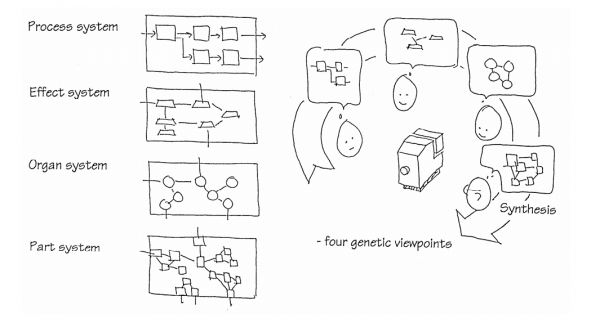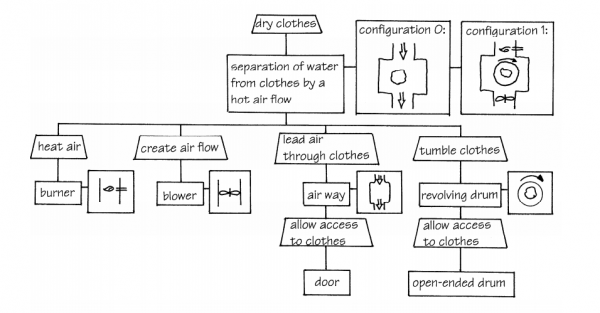Product structure modeling: Difference between revisions
Jump to navigation
Jump to search
| Line 19: | Line 19: | ||
Each of the four structural views indicates possible ways of decomposing a product or product assortment. Functional decomposition seems to be the core of decomposition because it can be argued that functionality is the most important property of a product, i.e. if the product does not possesses right functions then other properties are uninteresting. <ref name="mortensen" /> | Each of the four structural views indicates possible ways of decomposing a product or product assortment. Functional decomposition seems to be the core of decomposition because it can be argued that functionality is the most important property of a product, i.e. if the product does not possesses right functions then other properties are uninteresting. <ref name="mortensen" /> | ||
[[File:Functional-decomposition-of-a-dryer-by-hansen.png]] | [[File:Functional-decomposition-of-a-dryer-by-hansen.png|600px|center]] | ||
=References= | =References= | ||
Revision as of 23:41, 4 May 2020
Introduction
Product structure [modeling] is a hierarchical decomposition of a product, typically known as the Bill of Materials (BOM).—Wikipedia, [1]
Domain Theory
Domain Theory is a systems approach for the analysis and synthesis of products. Its basic idea is to view a product as systems of activities, organs and parts and to define structure, elements, behaviour and function in these domain.
According to Domain Theory, a product is seen from four system point of views:[3]
- A process view, where the transformation of materials, energy, and information of the product related to its use or function is central. This viewpoint lead to description of a process structure.
- An effect view, where the desired functions or effects are in focus. These effects must be able to facilitate the necessary transformations. This viewpoint is related to an effect / function structure.
- An organ view, where the technical principles or means of the product are in focus. These principles or solutions are called organs (or function carriers) and by their functionality they create the desired effects. The result of design considerations is an organ structure.
- A part view (or assembly view), where the machine parts of the products are in focus. By determining material, form, tolerances and surface quality of each part and relations between the parts, the necessary conditions for the organs and their functionality are created.
Function-oriented decomposition
Each of the four structural views indicates possible ways of decomposing a product or product assortment. Functional decomposition seems to be the core of decomposition because it can be argued that functionality is the most important property of a product, i.e. if the product does not possesses right functions then other properties are uninteresting. [3]

